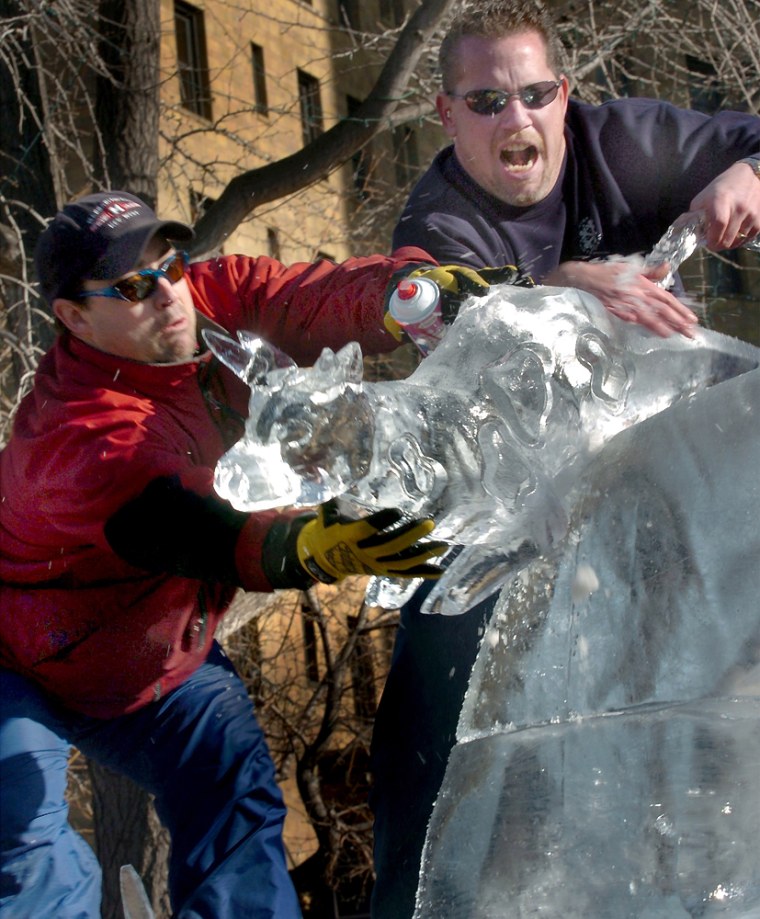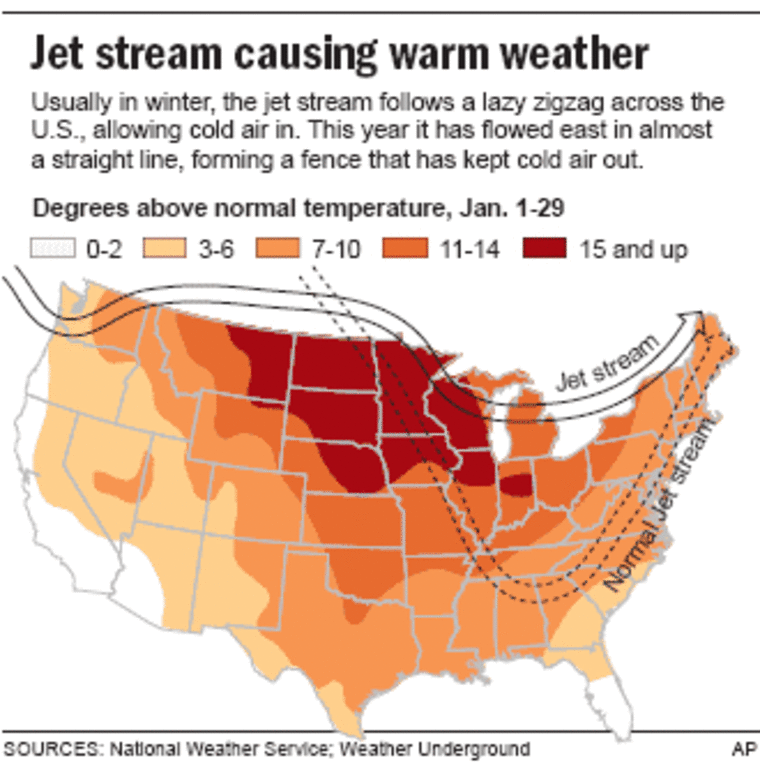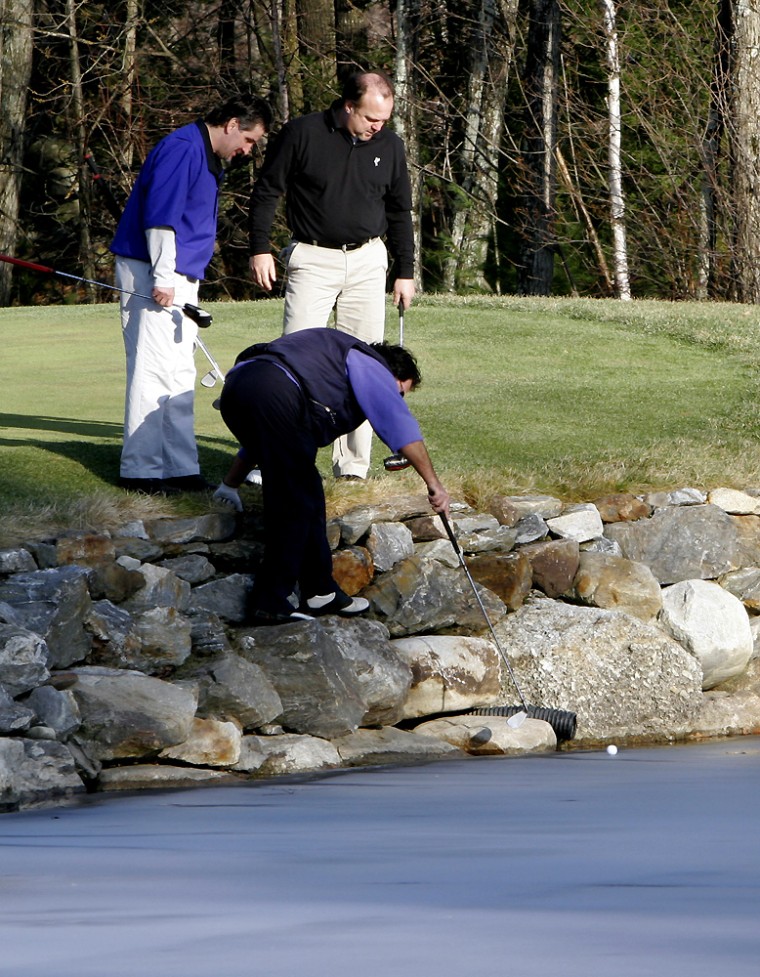Let’s put it this way: People played golf this winter in Maine. In shorts.
Buttercups have been blooming in Montana. In Ohio, an ice-free Lake Erie allowed an early start to seasonal ferry service. And the sap started running early in Vermont.
While January plunged much of Europe and Russia into the deep freeze, it appeared to be remarkably mild across the United States. Federal scientists haven’t calculated yet whether it ranks as the warmest January on record nationwide, but “it’s certainly going to be right up there,” said Michael Halpert, a meteorologist at the National Oceanic and Atmospheric Administration’s Climate Prediction Center.
The balmy weather will soon end for much of the country, he said.
Just how warm was January?
- Warmest on record in Oklahoma, South Dakota, Green Bay, Wis., Kansas City, Mo., Riverton, Wyo., and Eppley Airfield in Omaha, Neb. It barely missed tying the record for Iowa.
- Second-warmest in Maine and in Milwaukee, Wis.
- Third-warmest in Memphis, Tenn., and Detroit.
- Fourth-warmest in New York’s Central Park (tied with January 1913), in Greensboro, N.C., and Louisville, Ky.
- Eighth-warmest in Denver, and the warmest since 1986.
- 10th warmest in Baltimore.
- Warmest since 1950 in Buffalo, N.Y., and Nashville, Tenn.
- 12th-warmest in New Mexico.
Minneapolis and St. Paul had the warmest January in 160 years. Ice sculptures at the St. Paul Winter Carnival melted and broke up nearly as quickly as they were carved, and several big ice-fishing contests in Minnesota were canceled or moved because of thin ice.
Temperatures in Bismarck, N.D., stayed above zero the entire month, a balmy signal not seen since 1875.
Some win, some lose
The unusual weather has been a problem for some businesses but good for others.
At Ski Beech in Beech Mountain, N.C., “our snowmakers have worked themselves silly,” says Gil Adams, marketing and ski patrol director. “It’s been a continuous battle to build things back after a thaw spell.”

In southern Wisconsin, warm weather and rain meant cemetery workers using heavy equipment at grave sites had to put down plywood to avoid damaging the turf, not something they normally do in winter. “It’s like spring here in the southern part of the state,” said Clyde Rupnow, secretary of the Wisconsin Cemetery Association.
In Vermont, mild weather made sap run early and let maple syrup producers go to work ahead of schedule, especially in the southern part of the state. Sales rose about 40 percent at Toyota dealerships in Columbus, Ohio, as warm weather got people thinking about cars.
The Nonesuch River Golf Club in Scarborough, Maine, hosted 250 players on Jan. 21 and had to turn away 200 more. And Alan Rockhold, who owns Four Mile Car Wash in Des Moines, Iowa, said the warm spell in January has provided “one my best months in a long time.”
Colder next week
For much of the nation, however, meteorologist Halpert says the warm weather is on its way out.
“Probably by next week we will be seeing much colder weather over the eastern half to two-thirds of the country,” he said Wednesday. The West will probably remain warm on average, he said.

Why? The current warmth is caused by the unusual position of the jet stream, the high-altitude river of air that flows west-to-east across North America. It divides warm air from cold, with colder temperatures to its north and warmer temperatures to its south.
Usually in the winter, it follows a lazy zigzag across the United States and Canada, allowing cold air into the U.S. where it dips south, Halpert said. But for the past month or so, it has instead flowed east in almost a straight line across the northern part of the country, basically forming a fence that has kept cold air out and allowed in milder air masses from the Pacific Ocean instead.
Over the coming week, Halpert said, the jet stream is expected to return to its usual wavy pattern, bringing cold air to the eastern U.S. once again.
